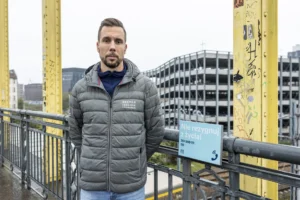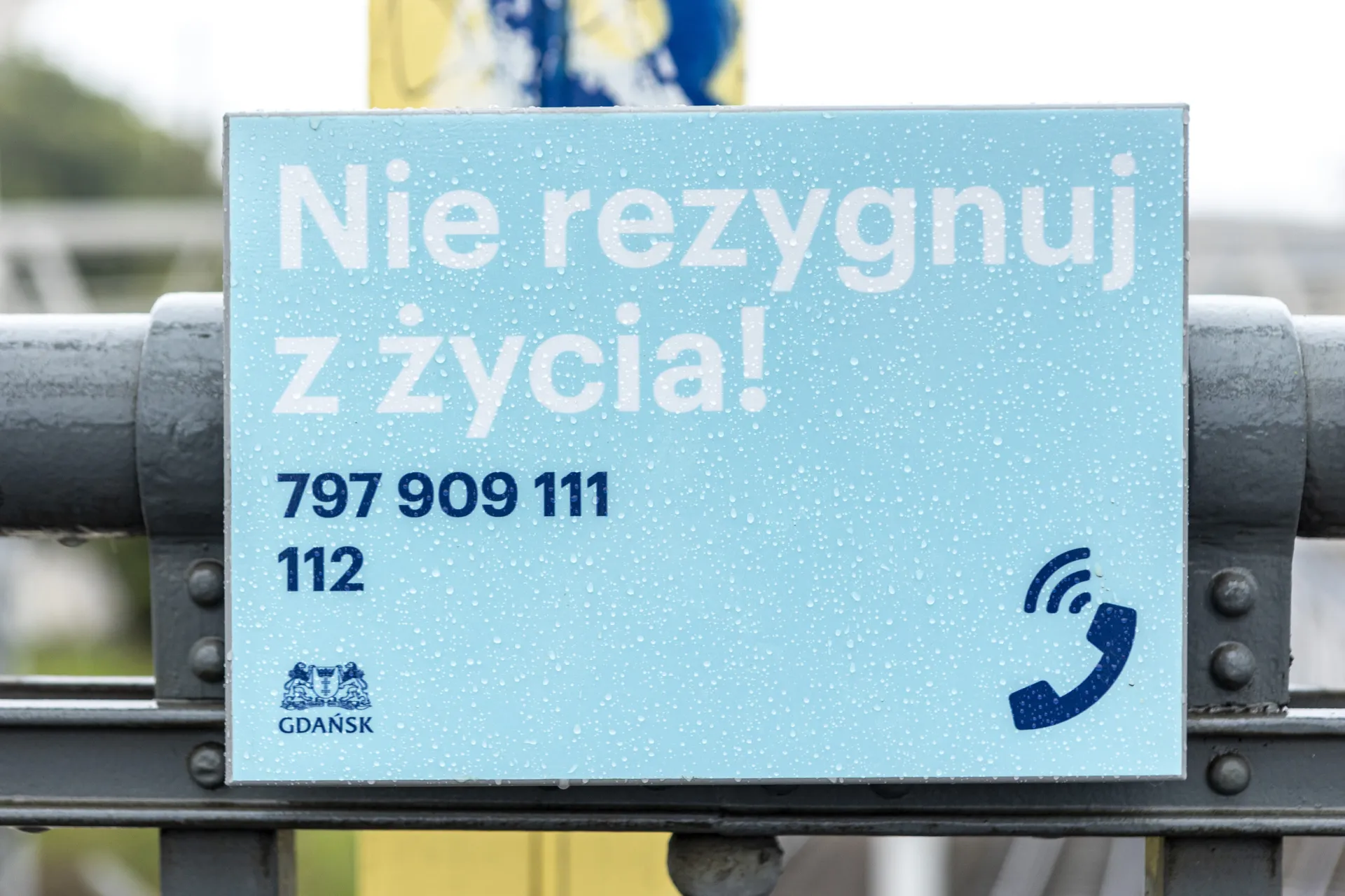In recent days, 30 green signs with the words “Don’t give up on life!” and emergency telephone numbers have appeared in Gdańsk, mounted on bridges, overpasses, and footbridges as part of preventive measures against mental health crises and suicidal thoughts. The aim is to remind people in crisis that there is hope and help is available.
The idea was born a year ago as a result of appeals from civic groups and councilors. In Gdańsk, the project involved installing signs in places particularly vulnerable to suicide attempts: bridges, overpasses, and footbridges. Each sign displays two numbers: 112 and the 24-hour Crisis Intervention Center hotline. This gives people in crisis a quick guide on where to seek help.

photo: Piotr Wittman/www.gdansk.pl
A similar idea was implemented earlier in Warsaw as part of the 2024 Civic Budget. Green signs with the same slogan and numbers (112 and 511 200 200, a 24-hour hotline for adults in crisis) appeared on four main crossings: Poniatowski, Gdański, Północny, and Śląsko-Dąbrowski. The project, designed by Karol Bąkowski, plans to extend the signs to all bridges and footbridges in Warsaw. Six signs were installed on the Poniatowski Bridge (three on each side).
Warsaw has also launched the number 511 200 200 (a 24-hour support line for adult residents) and engaged experts, suicidologists, psychologists, and non-governmental organizations to collaborate on the project.
How effective are these signs?
Signs and posters with emergency telephone numbers are symbolic and educational solutions — they are intended to draw attention, raise awareness of the availability of help, and encourage people in crisis to contact someone. In the literature on suicide prevention, the concept of “promoting access to emergency resources” is used to complement more direct measures, such as physical barriers on bridges.
However, research shows that while signage can be helpful, it does not always effectively prevent tragic events on its own. Physical barriers (fences, nets) are often considered the most effective means of reducing suicides from bridges, as they effectively restrict access to the jumping site.






